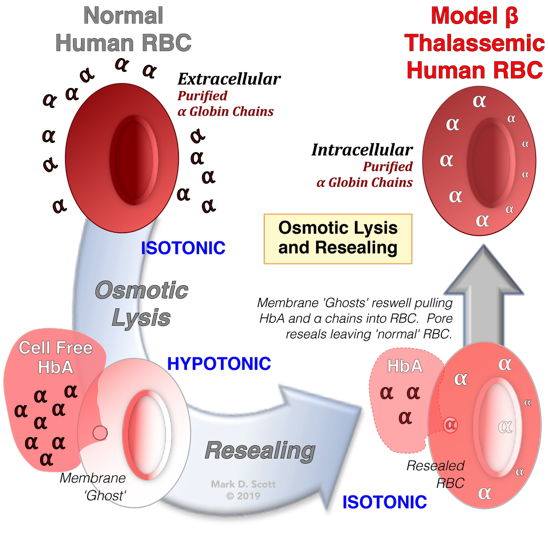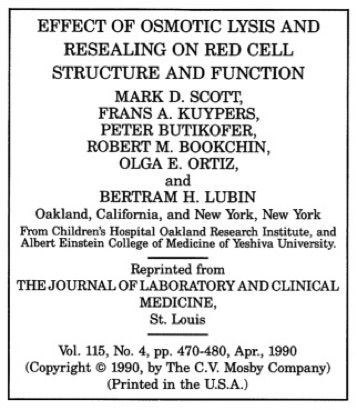
Osmotic Lysis and Resealing of
Red Blood Cells
Entrapment of exogenous materials (e.g., purified α-chains) within normal erythrocytes can be readily accomplished by the osmotic lysis and resealing of normal RBC (human, mouse, etc) as schematically shown. Briefly, washed, packed erythrocytes (80-85% hematocrit) are mixed with the purified CO-α-chains (10 mg/ml packed red cells) and then placed as a thin film within 11.5 mm diameter dialysis tubing (MW cutoff of 3500). The samples are dialyzed against a hypotonic lysis buffer (5 mM potassium phosphate buffer and 2 mM EDTA; pH 7.4) at 4° C for 60 minutes. The dialysis tubing is then transferred to an isotonic resealing buffer (5 mM potassium phosphate, 160 mM NaCl, and 5 mM glucose; pH 7.4) with gentle agitation for 30 minutes at 37° C. Following resealing, cells are washed with saline until the supernatant is clear. Using this procedure, approximately 70-80 percent of the initial packed erythrocyte volume is recovered. Radiolabeled α-chains can be utilized to quantitate the intracellular entrapment.


Scott, M.D. Model Human ß Thalassemic Erythrocytes: Effect of unpaired purified α-hemoglobin chains on normal erythrocytes. In: Beta Thalassemia (Editor: Zakaria, M.), INTECH. Croatia. ISBN: 978-1-83880-587-6 (2019). In press. DOI: 10.5772/intechopen.90288


